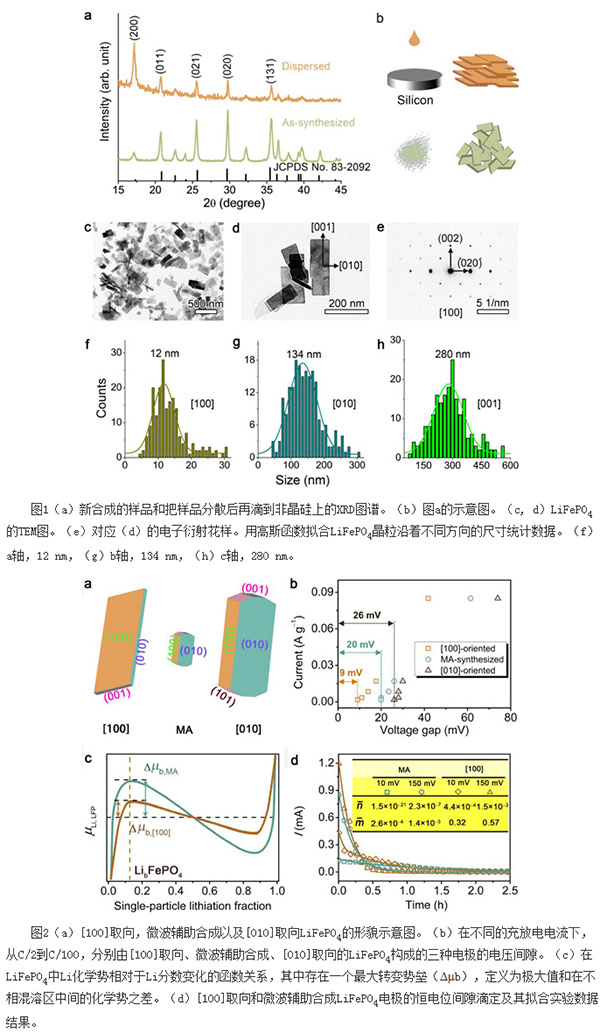
Lithium-ion batteries are the necessary power source for mobile electronic devices in today's society. They are composed of positive electrodes, negative electrodes, separators, and electrolytes. The key performance indicators (such as rate performance and cycle life) are determined by the electrochemical properties of the positive electrode materials. LiFePO4 is a well-known cathode material. In order to improve its electrochemical performance, people have long been devoted to shortening the diffusion distance of lithium ions, that is, to reduce the size of the [010] direction. Recent studies have shown that the electrode is composed of a large number of particles, and its electrochemical performance mainly depends on the ratio of particles (activated particles) that take part in the electrochemical reaction during charge and discharge to the total number of particles. Therefore, how to obtain LiFePO4 with a high proportion of activated particles is a key issue in the study of cathode materials.
In response to this problem, the research team of the High Performance Ceramic Materials Research Group of Shenyang National Institute of Materials Science, Chinese Academy of Sciences Institute of Metals, Wang Xiaohui's research group is based on the previous research (J. Phys. Chem. C 114: 16806 (2010); Phys. Chem Chem. Phys. 14:2669 (2012); CrystEngCommun 16: 10112 (2014)), for the first time in the world to prepare 12 nm thick [100] oriented LiFePO4 ultrathin nanosheets by creating an extremely water-short acidic synthetic environment. . The voltage hysteresis test results show that the electrode composed of this material has the smallest voltage gap so far. The constant potential gap titration test results show that the electrode has a high activation rate and conversion rate. These results indicate that the electrode has a [100] orientation. Electrodes composed of LiFePO4 ultrathin nanosheets have a high proportion of activated particles. Thus, the electrode has excellent rate performance and cycle life. At a charge/discharge rate of 10 C (60 minutes/10 = 6 minutes), 90% of the initial capacity can be maintained after 1000 cycles. At 20 C charge-discharge rate, the capacity can still reach 72% of the theoretical capacity. This work provides a new method and perspective for further improving the rate capability of lithium-ion batteries in the future. That is, not only can the lithium ion diffusion distance be shortened by reducing the dimension of the [010] direction, but also the size of the [100] direction can be controlled. Increase the proportion of activated particles in lithium-ion batteries to improve the rate performance of lithium-ion batteries. The relevant results were published in the January 1 issue of Nano Letters (16: 795-799).
This work was supported by the Metals Institute's "Introduction of Outstanding Scholars" project and the Youth Innovation Promotion Association of the Chinese Academy of Sciences.
KOYO Needle Roller Bearings,KOYO roller bearing,KOYO thrust ball bearings,KOYO deep groove ball bearings,KOYO self-aligning ball bearing
Shanghai Yi Kai Cheng bearing Co., LTD , https://www.ykchbearing.com